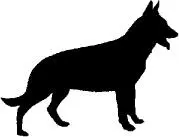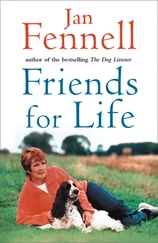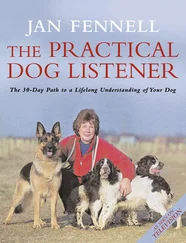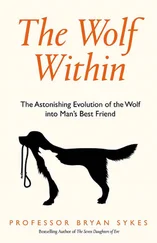It was many months later that I finally got to have a proper talk with Jim. I saw him in the village and he invited me in for a cup of tea and a chat.
The atmosphere in the house had changed completely from when I had last been there. Before, it was clear that everything was pretty much as it had been when Amy was alive. The house looked as if a woman lived in it – there were knick-knacks and feminine touches everywhere. Now it was very different. Amy hadn’t been forgotten – her picture still dominated the living room, and the flowers were as fresh as ever – but the rest of the house now reflected Jim’s personality rather than hers. He had redecorated and bought new furniture. The knick-knacks had gone and another photograph took pride of place on Jim’s mantelpiece – a lovely portrait of Ben.
Jim was obviously in the mood to talk and, as the tea flowed, he explained how important Ben had been to him. He confirmed what had been obvious to all of us who knew him. For the first two years after Amy’s death, he’d been a lost soul.
‘I hadn’t been able to come to terms with losing Amy. I couldn’t let go of her because I was all alone,’ he said. Ben’s arrival had provided him with company – and the strength finally to let go.
‘I hadn’t been able to grieve properly until I had him,’ he said. ‘When Ben arrived, I was able to start crying. He didn’t laugh at me for doing it, or stumble for the right words to console me. He just sidled up close and was there for me. That dog gave me a reason to live again,’ he told me. ‘Ben showed me my life wasn’t over.’
As so often happens, the dog had opened new doors for Jim. For some reason, people are more likely to strike up a conversation with someone who is walking a dog. And so it proved with Jim.
‘Ben has helped me make a lot of new friends,’ Jim explained. He told me his life was busier than it had ever been.
It was almost overwhelming to hear just how profound an effect this dog had had on Jim’s life.
Jim and Ben’s story has always remained with me, and it is an important one for a number of reasons. I am often asked to sum up what is so rewarding about having a dog. To be honest, it’s something I often find hard to put into words. On many an occasion I have used Jim’s story as the answer. To me, their story says more about the pleasures of owning a dog than any worthy, wordy statement. Jim and Ben were there for each other when it really mattered. And they rewarded each other with all the loyalty and love they could muster. I often think of the two of them walking down the country lanes together. If there’s an image of owner and dog in perfect harmony, then that’s it.
In the years that followed, as I delved deeper into our relationship with dogs, I came to realise he symbolised something more significant. Jim, as far as I was aware, wasn’t someone with experience of living with dogs. Yet, as I’d seen from the moment he and Ben had first met, he seemed to have a natural affinity, they seemed to trust and like him. When Ben had gone to live with him, they had built up a remarkably close bond. And again it seemed to have happened quite naturally. Jim never once came to me for any additional advice on looking after springers. I never heard of Jim attending any of the obedience classes that were popular in the area at the time. He just got on with it – with admirable results.
It was only years later, when I thought about that conversation with him, that it struck me what the key to his success must have been. It came to me when I remembered Jim with Amy all those years before. He had approached his relationship with Ben just as he had treated his marriage to Amy. When Amy had been alive, Jim had respected her. As he’d said himself, he hadn’t tried to change her, to mould her into something she was not. He had let her be herself – and she’d let him be himself.
Essentially, he had done the same thing with Ben. Jim had let his dog be himself and Ben had rewarded his master by allowing him to be himself at a time when he desperately needed to do so. With Ben around, Jim had finally felt free to cry openly and mourn. It was something so natural, yet at the same time so rare.
Of course, as we all know, relationships are not always this simple. Ordinary life can be much more complicated and demanding than this. People do have to change and make allowances for each other – and their dogs have to fit into their life as well. But within Jim and Ben’s story is an essential truth – something that has struck me as more and more important as the years have gone by: respect is the key to all great relationships.

FEELING THE FORCE
The importance of drawing on the lessons of others
Formulating the ideas that make up my method of communicating with dogs was a slow, almost imperceptible, invisible process. There was no real eureka moment, no apples fell from the trees. For years, usually without my realising it, people or events provided me with pieces in a giant jigsaw puzzle. Then one day I looked down to see that jigsaw complete.
The short version of the story is this. As my involvement in the dog world grew through the 1970s and 1980s, I had begun to harbour a deep distrust of traditional training methods. I attended – and even ran – my fair share of classes promoting these views, but I felt more and more that they were too aggressive, too reliant on the domination of the owner and the subjugation of the dog to his or her will. I felt there had to be another way.
The turning point came early in the 1990s, when fate conspired to take me by the hand. It was then that I saw a demonstration by the American ‘horse whisperer’ Monty Roberts. It was an inspiration to see the way he invited the horses to follow him of their own free will, using signals that the animals understood instinctively, rather than resorting to violence or aggressive behaviour of any sort. Monty and his ‘join up’ method set me thinking about whether it was possible to replicate this in dogs, to connect once more with the lost language that man and his best friend shared thousands of years ago.
While I had always been interested in dogs, by now I had begun to see them and their behaviour in a broader historical context, specifically in terms of their relationship with their ancient ancestor, the wolf.
I had discovered that wolf packs operate according to a strict hierarchy, with the Alpha pair as leaders and sole decision makers and the remainder of the pack ranked below according to a strict pecking order. Studying films and documentaries about wolves, I saw that the Alpha pair used four key moments in the day-to-day life of the pack to assert and sometimes reassert their authority. At mealtimes, for instance, they would always eat first. When it was time to go on the hunt, the Alpha pair would lead. At times of perceived danger, the Alphas would either withdraw the pack to safety or confront the threat on their behalf. And, finally, when the pack were reunited after a separation of some kind, the subordinates would pay the Alpha pair some kind of homage, licking frantically at their faces and carrying their bodies and tails lower than their leaders.
At the time, I had a pack of highly intelligent and responsive dogs sharing my life. As I studied the way they interacted more closely, I was surprised to see my own pack indulged in its share of ritualistic behaviour too. Like all dogs, they misbehaved here and there, but they also seemed to do so in a repetitive way, as if there was a pattern to it. As I watched them more closely, I saw striking similarities to the behaviour within the wolf packs. I realised my dogs became most agitated at mealtimes, as we prepared for our walks, when visitors arrived at the house and on my return from work in the evenings. What was more, they interacted with each other in a way that suggested there was a pecking order between them. For instance, my German shepherd, Sasha, seemed to carry herself in a more erect way, as if to keep a distance from the rest of the pack. At other times, she would interact with the rest of the pack, often licking them in a ritualised way. Clearly, the dog had been taken out of the wolf pack, but the wolf pack hadn’t been taken out of the dog. I began to see that my dogs were operating according to the same, hard-wired instincts as their ancestors. There was some kind of hierarchy within the pack and their behaviour was being coloured by it.
Читать дальше













